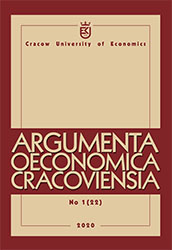A Comparison of Risk-Sharing Approaches in Hybrid Occupational Pension Schemes
A Comparison of Risk-Sharing Approaches in Hybrid Occupational Pension Schemes
Author(s): Anna Magdalena GieruszSubject(s): Economy, Business Economy / Management, Financial Markets
Published by: Wydawnictwo Uniwersytetu Ekonomicznego w Krakowie
Keywords: occupational pension schemes; risk sharing; hybrid schemes; contributions
Summary/Abstract: Objective: Hybrid pension schemes provide a mixture of features of DB and DC schemes. They allow for the risk to be shared between employer and member. The aim of this article is to present the risk sharing between employer and member within selected forms of hybrid pension schemes – cash balance and self-annuitizing schemes – and in a proposed type of hybrid scheme. Research Design & Methods: The variability of contributions required to provide a fixed level of benefit is chosen as a measure of risk within the schemes. Investment and longevity risk is introduced via changes in the investment rate of return and life table probabilities used to price annuities. The variability of member and employer contributions required in each scheme is compared. Findings: In cash balance and self-annuitizing schemes risk sharing is achieved by allocating a given type of risk (investment or longevity risk) to either the employer or the member. In the proposed scheme, risk is shared irrespective of its type. This allows for better financial planning for the two parties involved by setting a limit on the employer’s contributions and requiring an adjustment to the member’s contributions only in certain instances. Implications/Recommendations: A hybrid scheme which allows for risk to be shared irrespective of its type should be considered. Additional safeguards, such as setting an upper limit for contributions, should be employed. Contribution: Further development of hybrid pension schemes and a comparison of the proposed solution with existing ones.
Journal: Argumenta Oeconomica Cracoviensia
- Issue Year: 1/2020
- Issue No: 22
- Page Range: 73-88
- Page Count: 16
- Language: English

